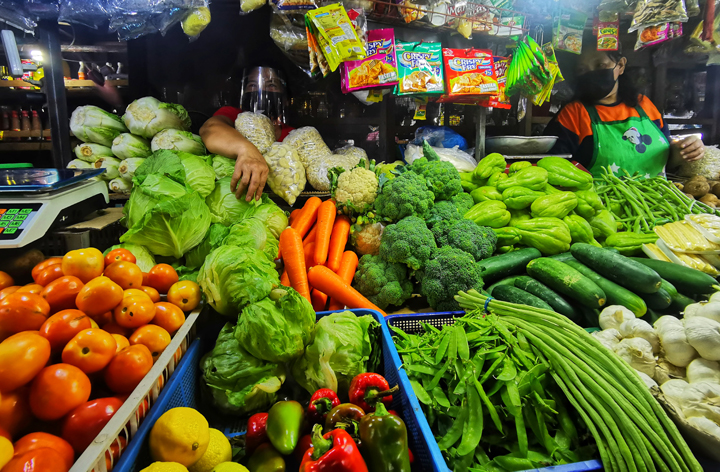
THE prices of vegetables in Metro Manila wet markets continue to increase, with certain crops being even more expensive than some meat products as the country grapples with supply issues.
Government price monitoring reports showed that the average prices of vegetables have risen for one straight month after production areas were battered by weeks-long rains brought about by the Habagat (southwest monsoon) last month.
The average price of cabbage has more than doubled to P220 per kilogram from P80 per kilogram recorded last month. Cabbage prices now range from a low of P180 per kilogram to a high of P300 per kilogram.
The average price of pechay (baguio) is now 233 percent higher than its previous month price level as it fetches between P150 and P270 per kilogram.
In comparison, the price of a fully-dressed whole chicken in Metro Manila wet markets ranges from P125 per kilogram to P170 per kilogram, reports showed.
Carrot prices doubled to P140 per kilogram, eggplant is up by 75 percent to P100 per kilogram; while both squash and ampalaya prices rose by 25 percent month-on-month to P50 per kilogram and P100 per kilogram, respectively.
The average price of chayote is now at P70 per kilogram versus P40 per kilogram last month, while Baguio beans price increased by 25 percent to P100 per kilogram.
Department of Agriculture (DA) officials attributed the price spikes to the adverse impact of Typhoon Fabian and monsoon rains to vegetable farms in Cordillera Administrative Region (CAR), Regions 2, 3, and 4A.
In the CAR region alone—the country’s top source of highland vegetables—the estimated damage to vegetable production reached P80 million, DA CAR Regional Executive Director Cameron P. Odsey said.
“The volume of vegetables being traded now in La Trinidad [trading posts] is declining. Before the Habagat damage, which is up to early August, we were seeing volumes that are bound for Manila at 1,500 metric tons daily,” he told the BusinessMirror.
“Then the volume being traded gradually decreased to 1,400 metric tons, 1,300 metric tons, and now we are seeing only 1,000 metric tons per day,” he added.
Till November, December
Consumers may have to endure the high prices for a little longer as highland vegetable supply may only recover in the latter part of November to early December, Odsey explained.
“Some of the vegetables like pechay baguio and Chinese cabbage take about three to four months to produce, so these will hit the market by November and December,” he said.
Nonetheless, unlike last year, the transport of vegetable supply from CAR to Metro Manila did not face any problems or challenges despite the imposition of a two-week enhanced community quarantine over the National Capital Region, Odsey said.
DA-High Value Crops Program Director U-Nichols A. Manalo said it is still planting season for vegetable production in Regions 2, 3, and 4A, which are some of the country’s major producers.
“These areas were affected by Typhoon Fabian and rains brought by Habagat. The harvest season in these areas is expected to start by the end of August or September,” Manalo told the BusinessMirror.
Nonetheless, Manalo assured Filipino consumers that the DA through its regional offices in Luzon continues to mobilize vegetable supply for the National Capital Region.
In January, the DA projected that the country may suffer a 79-day shortage of vegetables this year as supply shortfall is estimated at about 434,840 metric tons.
Image courtesy of Nonie Reyes

